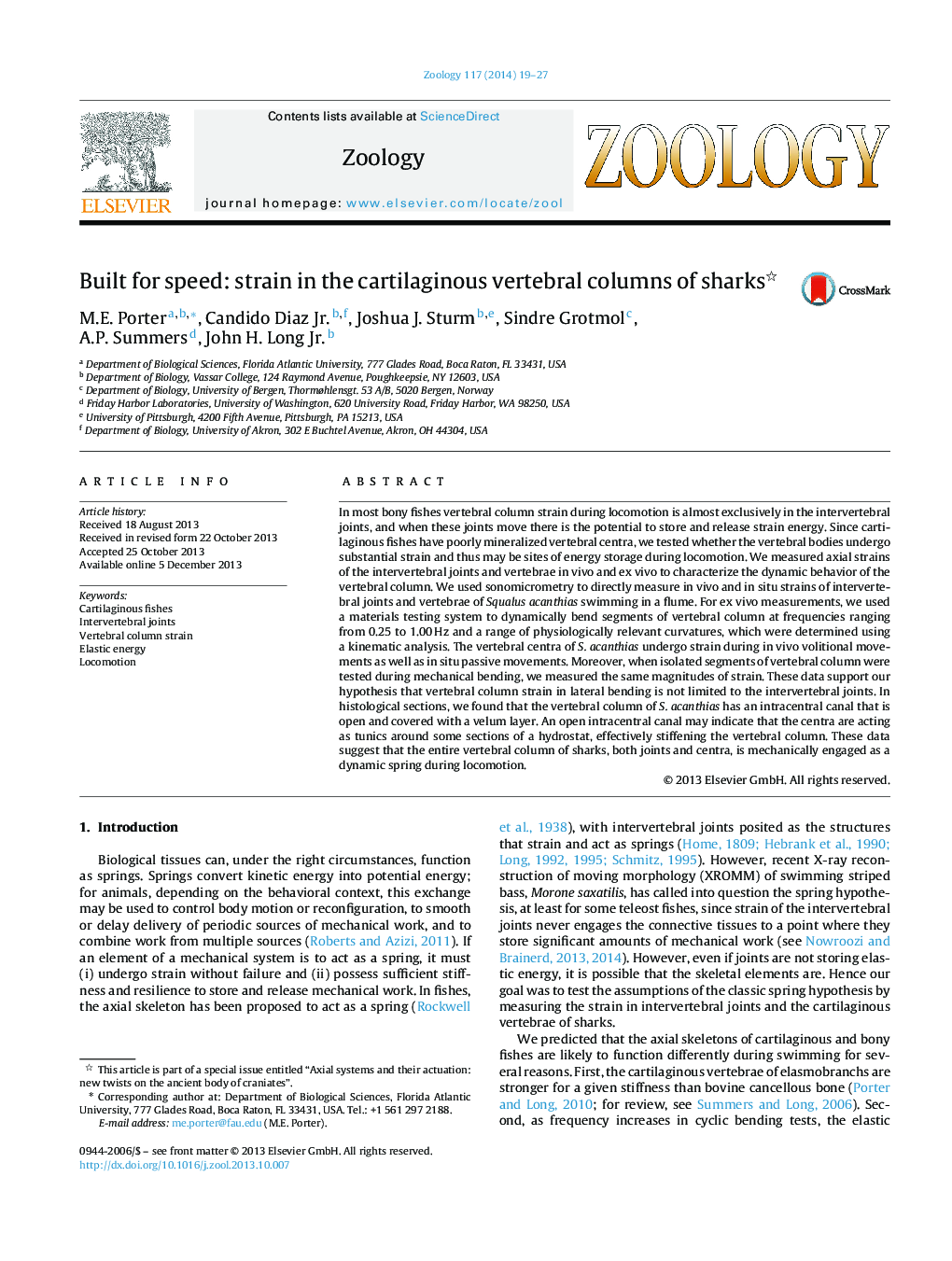| Article ID | Journal | Published Year | Pages | File Type |
|---|---|---|---|---|
| 5896427 | Zoology | 2014 | 9 Pages |
Abstract
In most bony fishes vertebral column strain during locomotion is almost exclusively in the intervertebral joints, and when these joints move there is the potential to store and release strain energy. Since cartilaginous fishes have poorly mineralized vertebral centra, we tested whether the vertebral bodies undergo substantial strain and thus may be sites of energy storage during locomotion. We measured axial strains of the intervertebral joints and vertebrae in vivo and ex vivo to characterize the dynamic behavior of the vertebral column. We used sonomicrometry to directly measure in vivo and in situ strains of intervertebral joints and vertebrae of Squalus acanthias swimming in a flume. For ex vivo measurements, we used a materials testing system to dynamically bend segments of vertebral column at frequencies ranging from 0.25 to 1.00Â Hz and a range of physiologically relevant curvatures, which were determined using a kinematic analysis. The vertebral centra of S. acanthias undergo strain during in vivo volitional movements as well as in situ passive movements. Moreover, when isolated segments of vertebral column were tested during mechanical bending, we measured the same magnitudes of strain. These data support our hypothesis that vertebral column strain in lateral bending is not limited to the intervertebral joints. In histological sections, we found that the vertebral column of S. acanthias has an intracentral canal that is open and covered with a velum layer. An open intracentral canal may indicate that the centra are acting as tunics around some sections of a hydrostat, effectively stiffening the vertebral column. These data suggest that the entire vertebral column of sharks, both joints and centra, is mechanically engaged as a dynamic spring during locomotion.
Related Topics
Life Sciences
Agricultural and Biological Sciences
Animal Science and Zoology
Authors
M.E. Porter, Candido Jr., Joshua J. Sturm, Sindre Grotmol, A.P. Summers, John H. Jr.,
